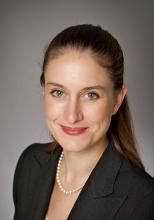New Hampshire-based Pax World Management runs a $145 mn gender diversity fund based on the Pax Global Women’s Leadership Index. CEO Joe Keefe explains how it’s done.
What was the rationale behind the launch of your Global Women’s Index Fund: activism or financial return?
Back in 1993, it was called the Women’s Equity Fund and it was run out of a little firm in California. We ended up buying that fund from the founders in 2007 and changed the name to the Pax World Global Women’s Equality Fund.
We built an index called the Pax Global Women’s Leadership Index, which was the first index in the world consisting of firms that have better representation of women on their boards and in senior management. Then in 2014 we relaunched the fund as the Pax Ellevate Global Women’s Index Fund, based on that index.
We had seen a lot of research suggesting that companies that have more women in leadership actually perform better so the idea was to identify those companies, build an index consisting of those companies and then launch a fund that invests in them. If the research is correct, that fund should outperform the market over time – and indeed that’s precisely what has happened: we launched the fund three years ago and just got the June 30 results and it is beating the MSCI World Index. Our data indicates that the reason companies in the fund are performing better is because of the benefits of a more diverse leadership team.
What ESG investing is about at some fundamental level is aligning financial return with some other social and environmental returns. We see it as a sort of virtuous circle where the gender diversity contributes to better performance and the better performance incentivizes companies to more broadly embrace gender diversity. So both ideas are at the heart of it: the financial part and the impact part.
What’s the fund’s investment process?
We took the MSCI World Index, which is about 1,600 companies, and we selected the top 25 percent in terms of the companies with the most women on their boards and in senior management, and built an index consisting of those 400 firms.
The fund invests in that index, but in the fund we place even more emphasis on the gender diversity factor, so a company that has 40 percent of women on its board will get a little extra weight versus another that has 30 percent, and so forth. While the index is market cap-weighted, meaning the larger companies have the biggest positions – here Microsoft is number one – in the fund Microsoft might be the number nine holding because other companies with slightly more diverse boards or more diverse management teams will get extra weighting.
So the fund makes an even better bet on gender diversity than the index. It’s a little bit like factor investing or smart beta: the factor we’re placing the financial bet on is gender-diverse leadership.
What type of clients do you target for this fund? Has it been popular?
Most of the money is coming in through financial advisers who have clients interested in this investment thesis. Those clients may be women and some of the financial advisers may be women. Women are maybe at first more receptive to this argument, but because the fund is outperforming, we think over time it will have more and more interest for institutional investors, particularly institutions that have some sort of mission alignment on the issue of gender, whether it’s women’s colleges and universities or certain foundations and endowments.
There’s been something of a spotlight on gender diversity in boardrooms (and greater diversity in general). How much of that do you see as being down to pressure from investors?
I think investors have made a big difference. Pax is a founding member of the 30 Percent Coalition, which has been writing to companies, filing shareholder resolutions and engaging in dialogue about adding women to corporate boards for the last four to five years. As a result, in excess of 100 companies that had no women on their boards have now added some.
We engage with companies all the time and have been able to convince a certain number of them to embrace the notion of gender-diverse boards. One of the reasons investors are having so much success putting this pressure on companies is because investors are citing the research that this is actually a smart business decision, it’s not just a matter of equal rights.
Also, what’s interesting right now is that we’re beginning to see some of the larger asset management firms looking at board diversity when they vote their proxies, and I think that’s going to be a game changer.
What should companies be doing to promote greater gender equality in the workplace?
Here at Pax, when we recruit for any position, we have a rule that there have to be women in the finalist pool. We insist that any search firms we work with respect this – and then we hire the best person; we don’t have a quota. But as a result of that policy we’ve got a workforce and a board that are almost 50 percent women. To do this right, there has to be a certain mindfulness; companies have to decide they’re going to promote gender diversity in terms of recruiting, training, mentoring and work/family balance.
In your arena, IR professionals should start paying more attention to this. If an IRO is representing a company with a diverse board and management team, that’s something to brag about, because there is a connection between diversity and performance. And if you’re an IRO for a company that does not have good diversity, I would predict you’re going to hear about it before long. It’s going to be a point of pressure and something you’re going to have to be more responsive to, so there’s a lot for IROs to think about on this issue.










